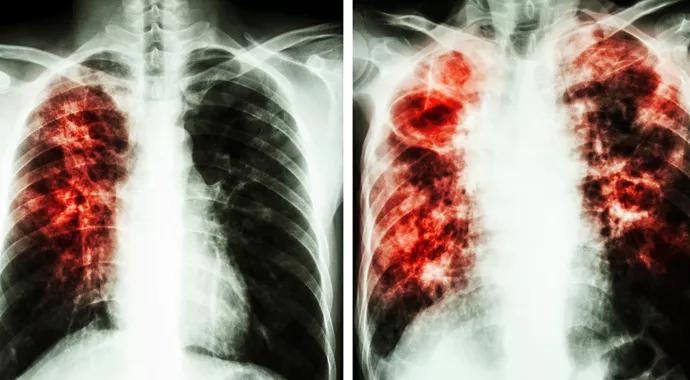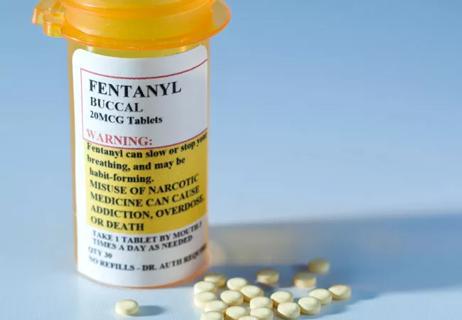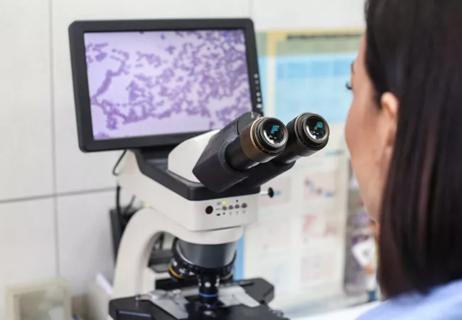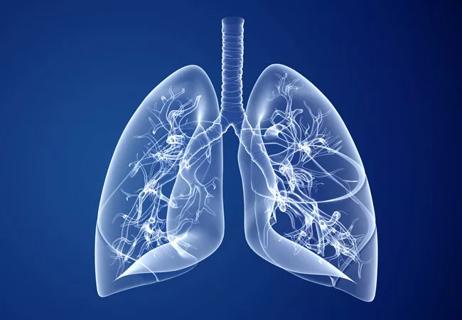Clinical trials necessary to cure devastating disorder

Advertisement
Cleveland Clinic is a non-profit academic medical center. Advertising on our site helps support our mission. We do not endorse non-Cleveland Clinic products or services. Policy
The FDA approval of pirfenidone and nintedanib in October 2014 as the first-ever treatments for idiopathic pulmonary fibrosis (IPF) represented the culmination of decades of research into the mechanisms underlying this devastating disorder.
The understanding of this disease as an epithelial-cell-driven aberrant wound healing process orchestrated by transforming growth factor beta (TGF-β) not only led researchers to study these two agents, but opened the door for a number of other therapies. Many of the agents under investigation have the exciting potential to not only slow fibrosis, but halt and even reverse the fibroproliferative cycle in IPF.
A number of lines of evidence suggest that no single agent is responsible for the lung injury seen in IPF, but that individuals with IPF have intrinsic epithelial cell defects that render the epithelial cell susceptible to repetitive injury from any number of environmental agents (e.g. cigarette smoke, acid reflux, viral infections). This injury leads to aberrant signaling between the lung epithelium and mesenchyme, resulting in a persistent, abnormal wound healing response.
Throughout the lung tissue matrix, TGF-β exists within an “envelope” that renders it inactive. When epithelial cells are damaged they express receptors called integrins which bind to this envelope and release TGF-β, allowing it to activate fibroblasts. One of these integrins, alpha-v beta-six (αvβ6), is expressed in lung epithelial cells where injury or fibrosis is occurring. An inhibitor of αvβ6 known as STX-100 showed significant anti-fibrotic activity in preclinical lung, kidney and liver models. A Phase II study comparing the effects of weekly subcutaneous injections of STX-100 began in 2012 and is still actively enrolling patients with IPF.
Advertisement


Lysophosphatidic acid (LPA) is a bioactive phospholipid that is generated in response to lung epithelial injury and then binds to its receptor (LPA1) on lung epithelial cells, endothelial cells, and fibroblasts to promote vascular leakage, potentiate epithelial damage, and recruit fibroblasts to the area of injury. In preclinical models, an LPA1 receptor antagonist was shown to reduce all of these responses, including fibrosis, at multiple time points. A Phase II study comparing the effects of the orally administered LPA1 receptor antagonist BMS-986020 vs. placebo on FVC decline in patients with IPF began in January 2013 and is underway.
Since TGF-β has been identified as the “master regulator” of fibrosis, it may seem sensible to directly target this growth factor. However, TGF-β has pleiotropic effects, including suppressing tumor growth and inflammation. Thus, a strategy directly targeting TGF-β could potentially increase the risk of malignancy or an uncontrolled inflammatory response.

Connective tissue growth factor (CTGF) is a protein that resides in the extracellular matrix and interacts with other proteins, such as TGF-β, to modify their effects. Since it is a downstream mediator of the effects of TGF-B, it can block the pro-fibrotic effects of TGF without affecting its anti-proliferative and immunosuppressive properties.
FG-3019, a monoclonal antibody to CTGF, has shown efficacy in a number of animal models of fibrosis, including pulmonary fibrosis. Preliminary results of a Phase II study evaluating FG-3019 in IPF patients suggested that a higher dose of the drug prevented decline in lung function and, in some cases, even resulted in improved fibrosis on CT scans. This has prompted an extension of the study using the higher dose, which is recruiting patients.
Advertisement
One of the most exciting discoveries in fibrosis research over the past decade was the understanding that tissue stiffness can recruit and activate cells to create further scarring. In other words, once fibrosis develops in the lung, this process can serve as a nidus for further scar formation. This mechanism explains why fibrosis can progress in IPF, even in the absence of inflammation.

New agents are being developed that directly target lung tissue stiffness. Simtuzumab is one drug that specifically targets lysyl oxidase-like 2 (LOXL2), an enzyme that cross-links collagen and elastin, resulting in increased tissue stiffness. This enzyme is present in high levels in the lungs of patients with IPF, and blocking LOXL2 in animal models results in a significant reduction in lung fibrosis. A Phase II trial comparing the efficacy and safety of simtuzumab, administered in weekly subcutaneous injections, vs. placebo in IPF patients is underway.
A frequent question asked by patients with IPF is whether they should pursue stem cell therapy for their disease. A number of animal studies demonstrated a potential beneficial role of stem cell therapy in a number of lung diseases, including IPF. However, there is also some pre-clinical data suggesting that stem cell therapy may actually worsen fibrosis.
A Phase I study in Greece found no significant adverse events following administration of autologous adipose derived stromal cells to 14 patients with IPF. Similarly, a Phase I study in Australia demonstrated that administration of placental-derived stem cells to eight patients with IPF was safe and well-tolerated. However, there were no significant differences in lung function or fibrosis at 6 months.
Advertisement
A Phase I trial evaluating the safety and feasibility of stem cell therapy in IPF is underway at the University of Miami. Other trials involving stem cells in IPF are ongoing in Spain and India. We are eagerly anticipating the results of these trials as well as basic science research that is moving this field forward. However, until the safety and effectiveness of such therapies have been rigorously tested, major organizations such as the American Lung Association, the American Thoracic Society, and the Medical Advisory Board of the Pulmonary Fibrosis Foundation strongly recommend against participating in any stem cell interventions other than approved clinical trials.
Along with the approval by the FDA of the first two agents for the treatment of IPF, recent research discoveries and a better understanding of the underlying mechanisms of fibrosis opened the door for many exciting new therapies for fibrotic disorders. In addition to those mentioned here, a number of agents are in pre-clinical and Phase I studies that could potentially halt or even reverse fibrosis in IPF. Participation in clinical trials is one of the greatest contributions patients can make towards realization of a cure for this devastating disorder.
The Cleveland Clinic Respiratory Institute is participating in all of the drug trials mentioned above, and many of the protocols are being modified to allow patients already on pirfenidone or nintedanib to participate. To refer a patient for evaluation for one of these trials, please contact Howard Christie or Jessica Glennie at 216.444.8994.
Advertisement
Dr. Southern is a staff physician in the Respiratory Institute and is a co-investigator on a number of clinical trials for patients with IPF. His research focus is IPF. For more information contact Dr. Southern at southeb@ccf.org or 216.444.7655.
Advertisement

Volatile organic compounds have potential in heart failure diagnostics

Insights for diagnosing, assessing and treating

Two NIH grants are looking at developing new antidotes against fentanyl overdose

Exploring the responses to medications and other supportive therapies

A set of graphs helps quantify the expected changes in forced expiratory volume at one second (FEV1), forced vital capacity (FVC) and FEV1/FVC ratio with the new race-neutral equation

Because of the associated symptoms, a multidisciplinary approach to care is essential

Patients with COPD are often affected by sarcopenia, but the underlying mechanisms for the development are poorly understood. New research looks into the causes and potential therapies

Research explores how incorporating long-term benefits will impact the new U.S. lung transplant allocation system